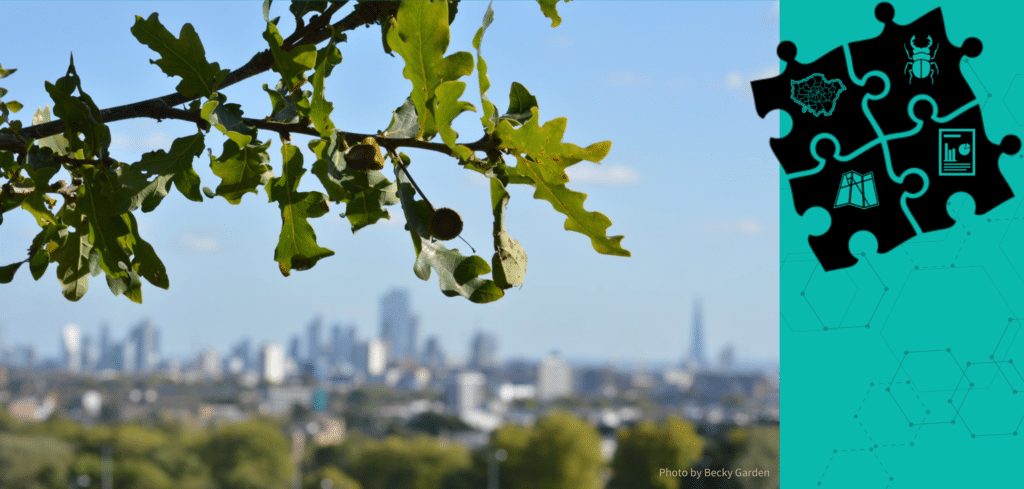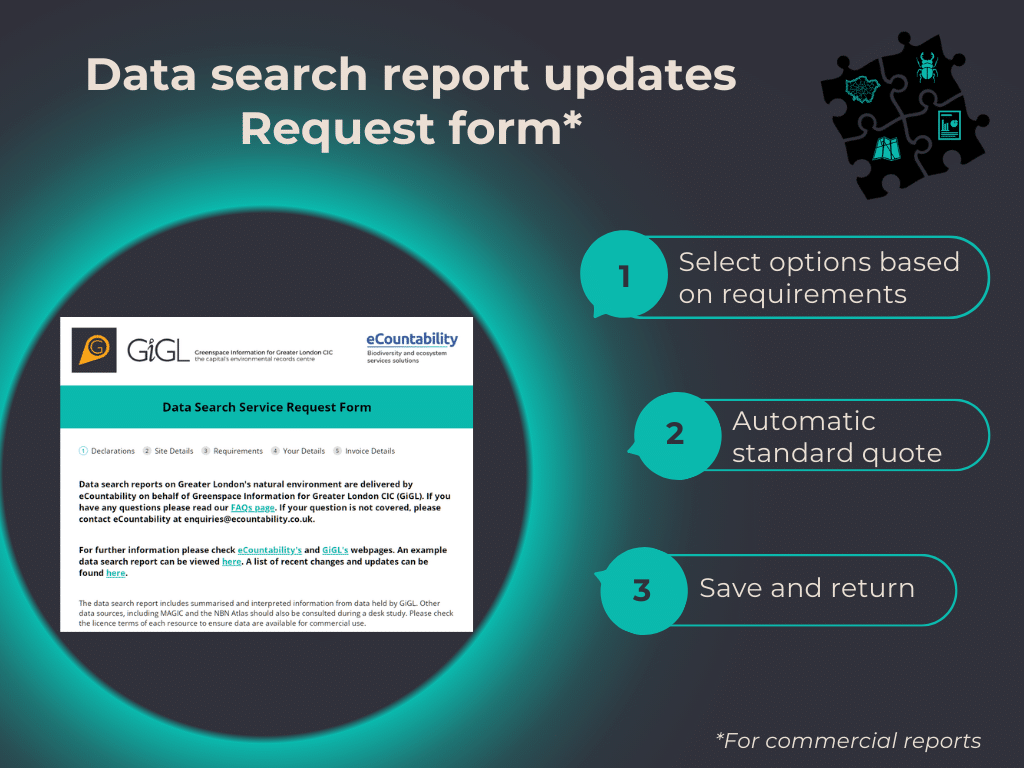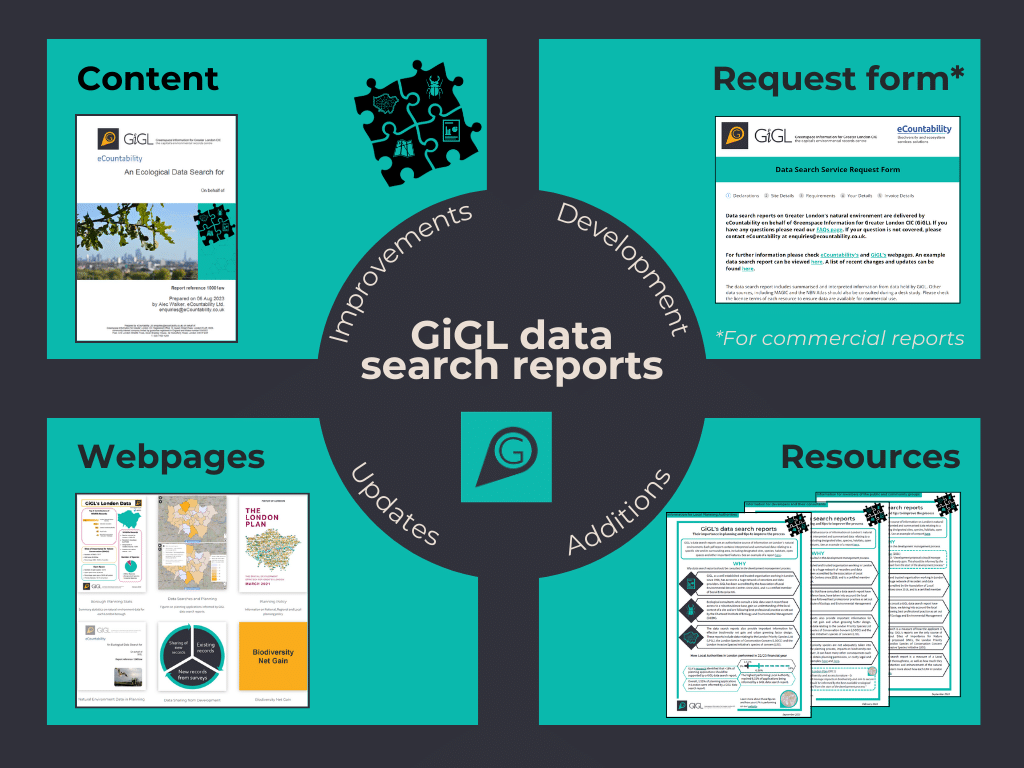
GiGL’s data search reports are an authoritative source of information on London’s natural environment and are key components when assessing the potential ecological impact of development projects.
Delivered on our behalf by eCountability, each report contains interpreted and summarised data relating to a specific site and its surrounding area, including designated sites, species, habitats, open spaces and other important features. You can read more about their history and why they’re so important in the planning process in this GiGLer article.
Content updates
Over the last two years or so we have been implementing small incremental changes and updates to the content of our reports, from adding a section on proposed Sites of Importance for Nature Conservation (SINCs) to updating the London Priority Species List (LPSL) and London Species of Conservation Concern (LSOCC).
We constantly strive to improve our services, and to do so in a way best suited to our users. In September 2021, we launched our customer feedback programme with a brief survey going out with every data search report delivered to our clients. In August 2022, we sent our clients a detailed questionnaire to get their views on various aspects of our service, such as feedback on the current content and suggestions for improvement. We would like to thank all our clients who responded to the two surveys. We really appreciate their time and the feedback they provided.
As a response to the feedback we received through these surveys, the GiGL team has been working on a series of bigger changes which we are happy to announce have just launched in collaboration with eCountability. These include the following changes to our internal and client data search reports:
- The species tables are now delivered in a separate excel spreadsheet as well as in the PDF report, which allows for easier record sorting.
- The maps are now delivered in a separate PDF document which allows easier cross-referencing with the information in the main data search report.
- Summary tables have been added to the statutory and non-statutory site sections which provide an overview of the sites present within the search area.
- The content page is now linked to each section for easy access.
- A series of smaller text and map updates.
- In order to mark this important milestone, we have also updated our data search report cover page.
For an overview of these changes please see this video:
Request Form
Another part of these big changes in our data search reports is the introduction of an online request form. Our clients are now able to submit a request for a data search report through this online form.
Partners, contractor to partners, community groups and members of the public can still access our data search reports through the usual routes (see our FAQs for more information).
Through this new online form, our clients will be able to provide the usual information and specify their requirements. The form also gives options for an automatic quote for standard data search reports or the option to request a quote for non-standard reports. There is also the option of saving your progress and returning to the form at a later date.

Looking ahead
GiGL will continue to make more improvements to our service and support our stakeholders with existing and new requirements, such as Biodiversity net gain (BNG), and London’s Local Nature Recovery Strategy (LNRS). Please, if you are a client, continue to respond through the quick customer satisfaction survey and look out for another detailed survey in the future.
You can also read this new article exploring updated data search report figures per Local Authority and how well (or not) biodiversity data are used to inform development in London. In this article, you can also learn all about the new resources we’ve produced to raise awareness of the importance of our data search reports in planning.

